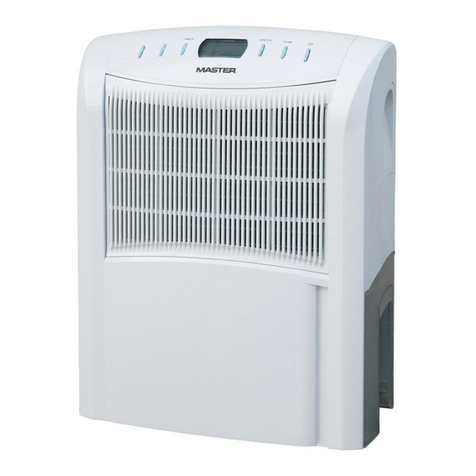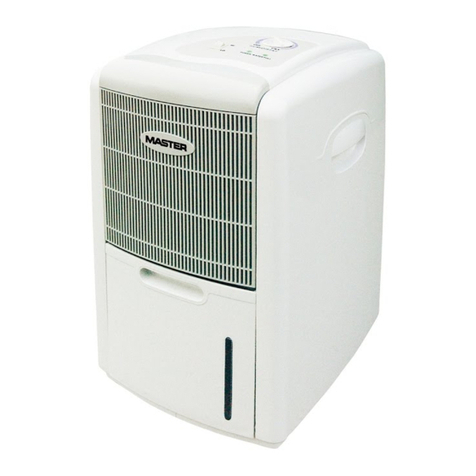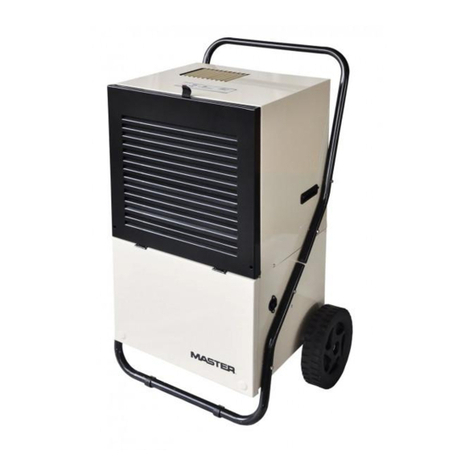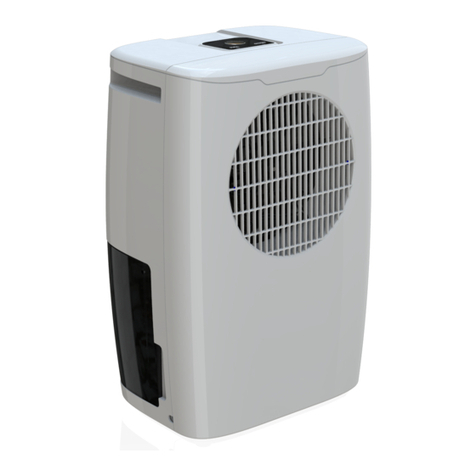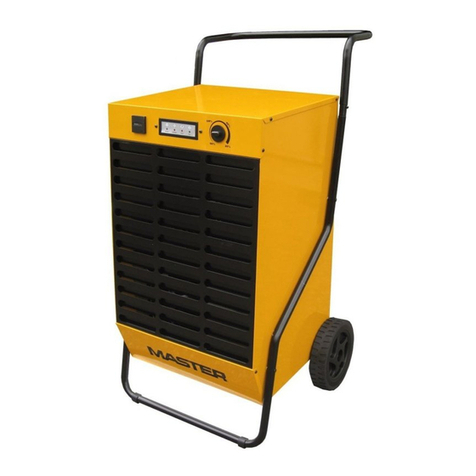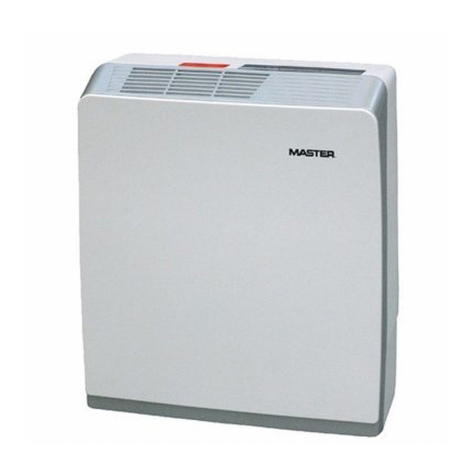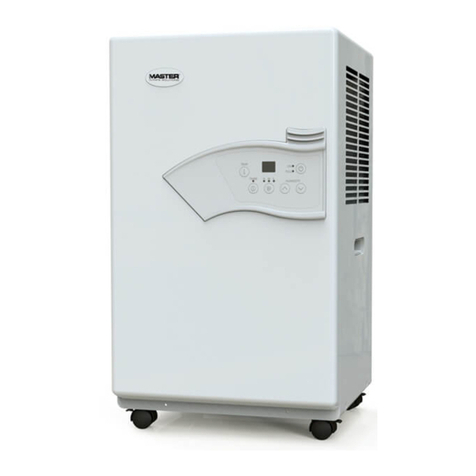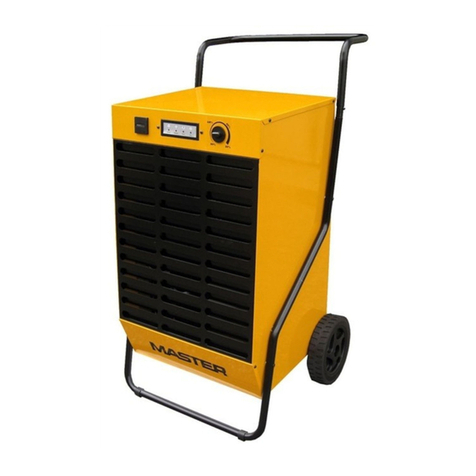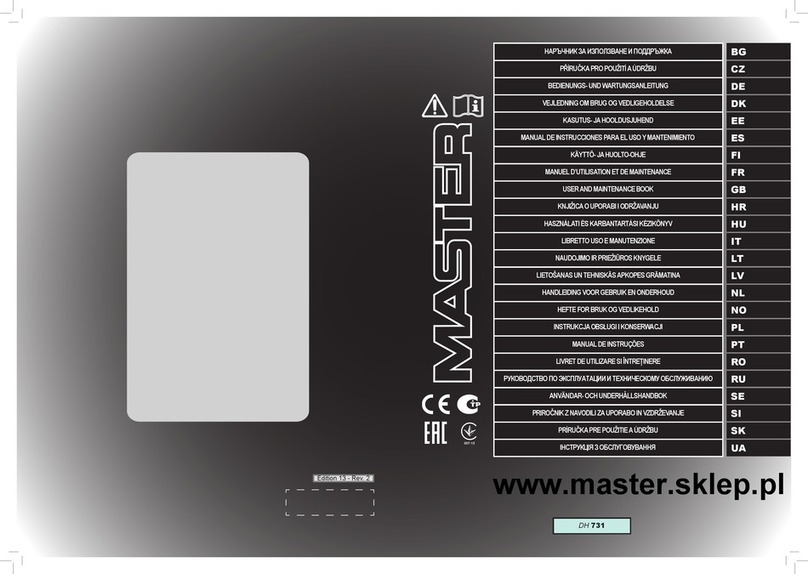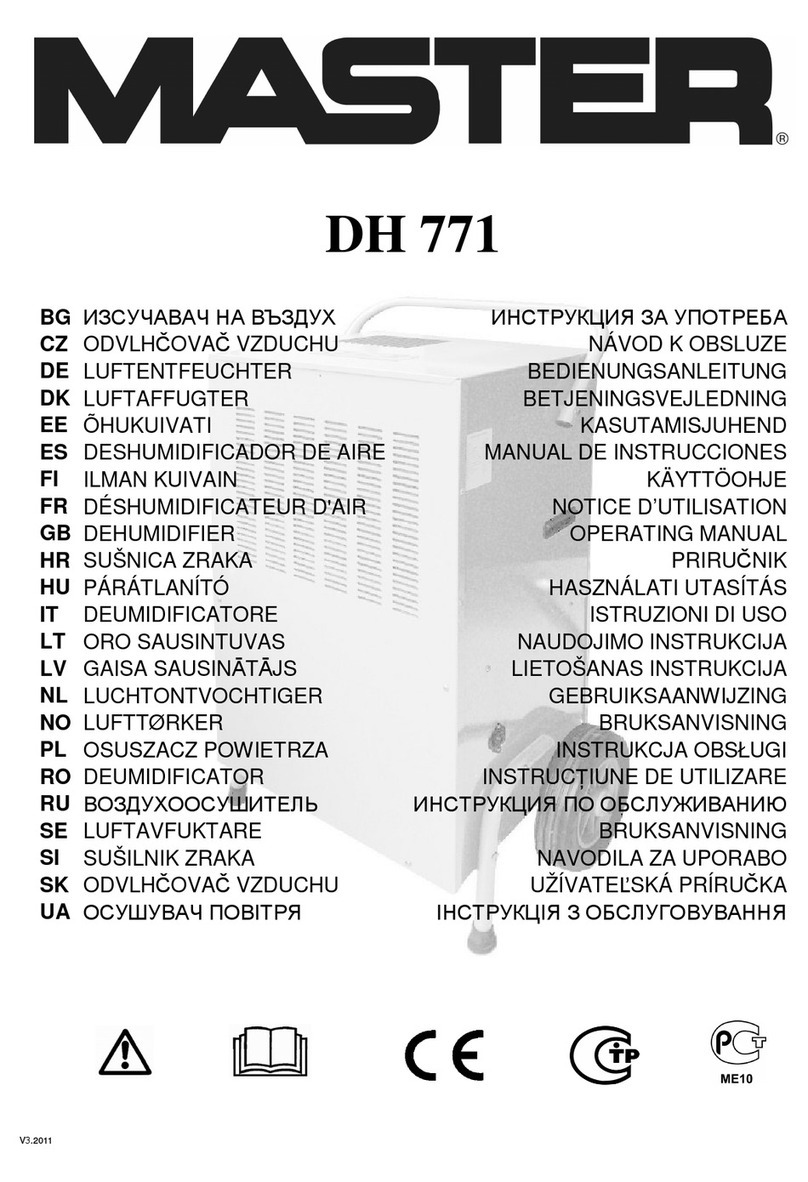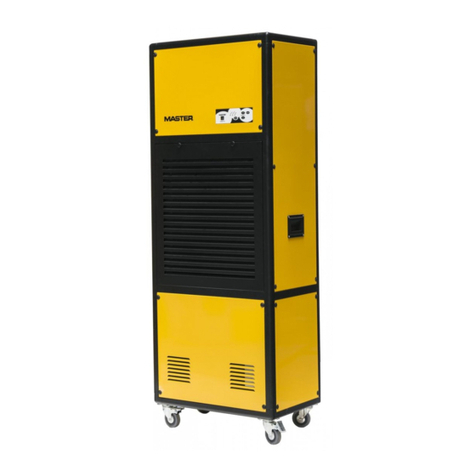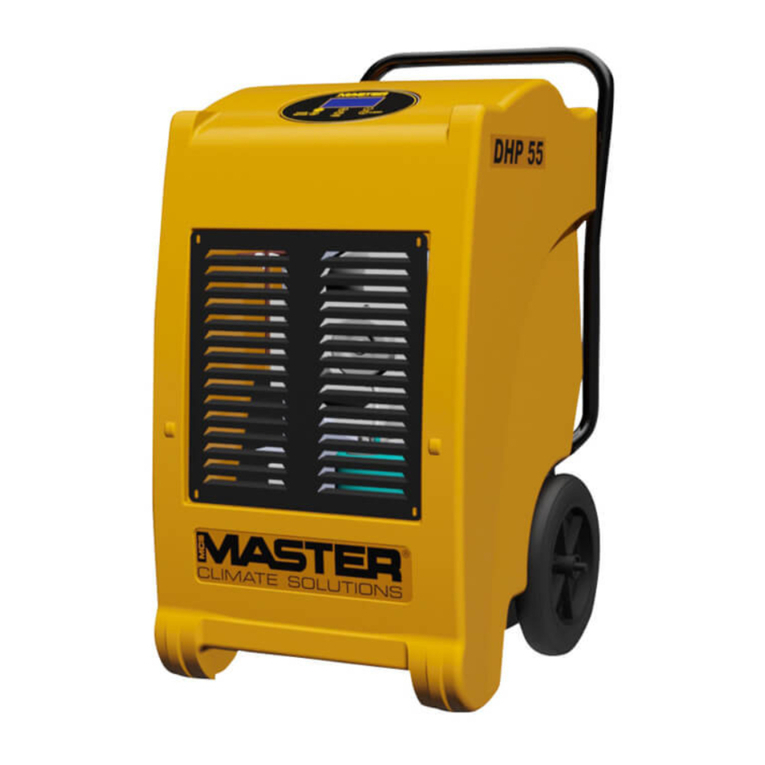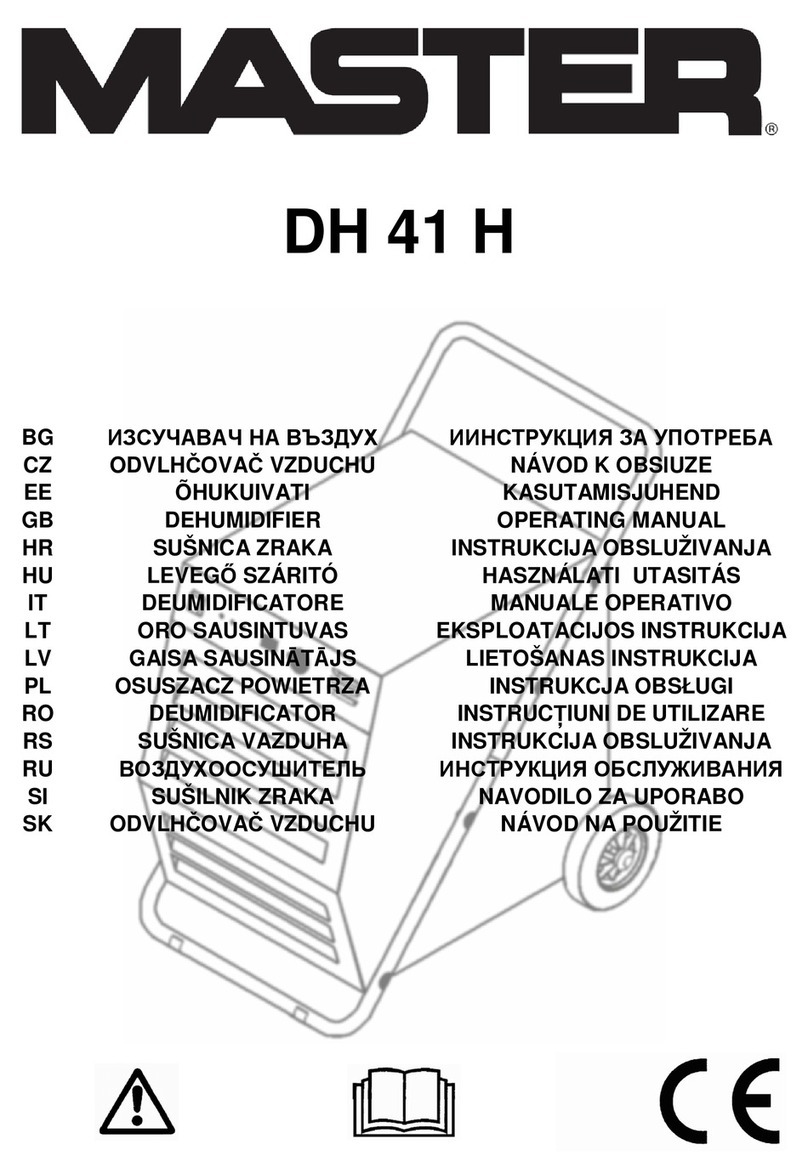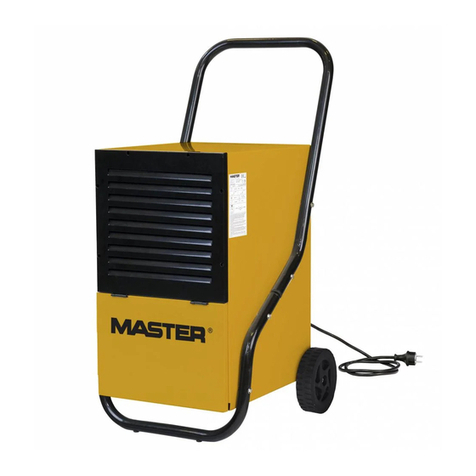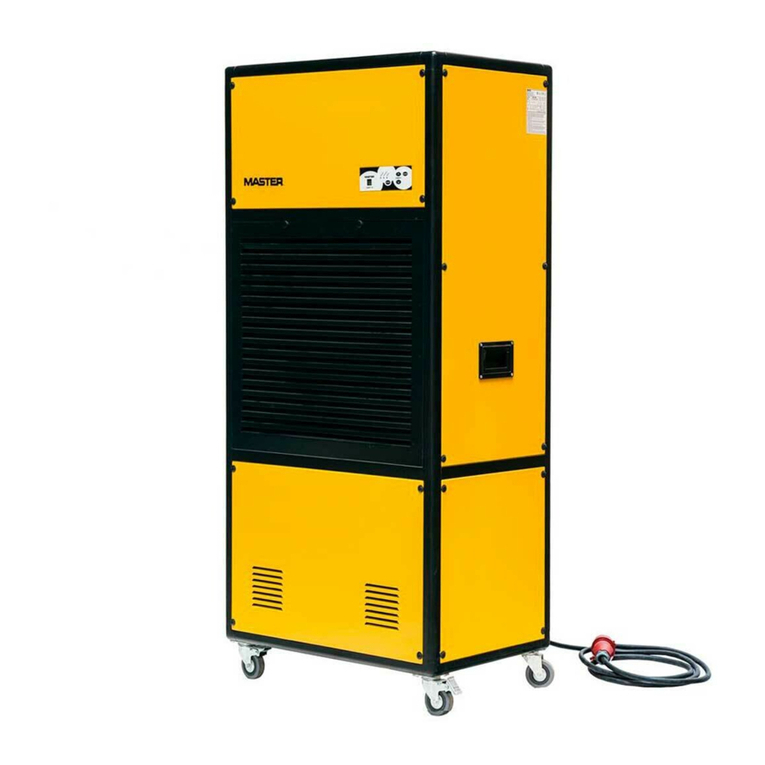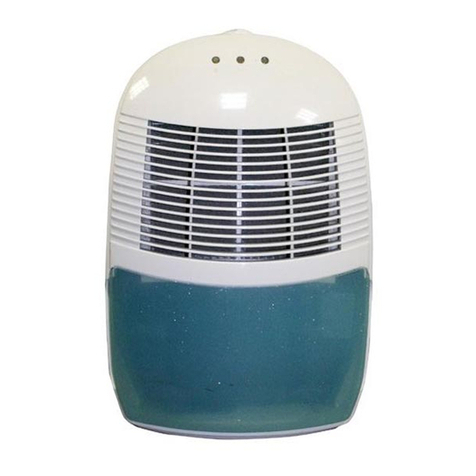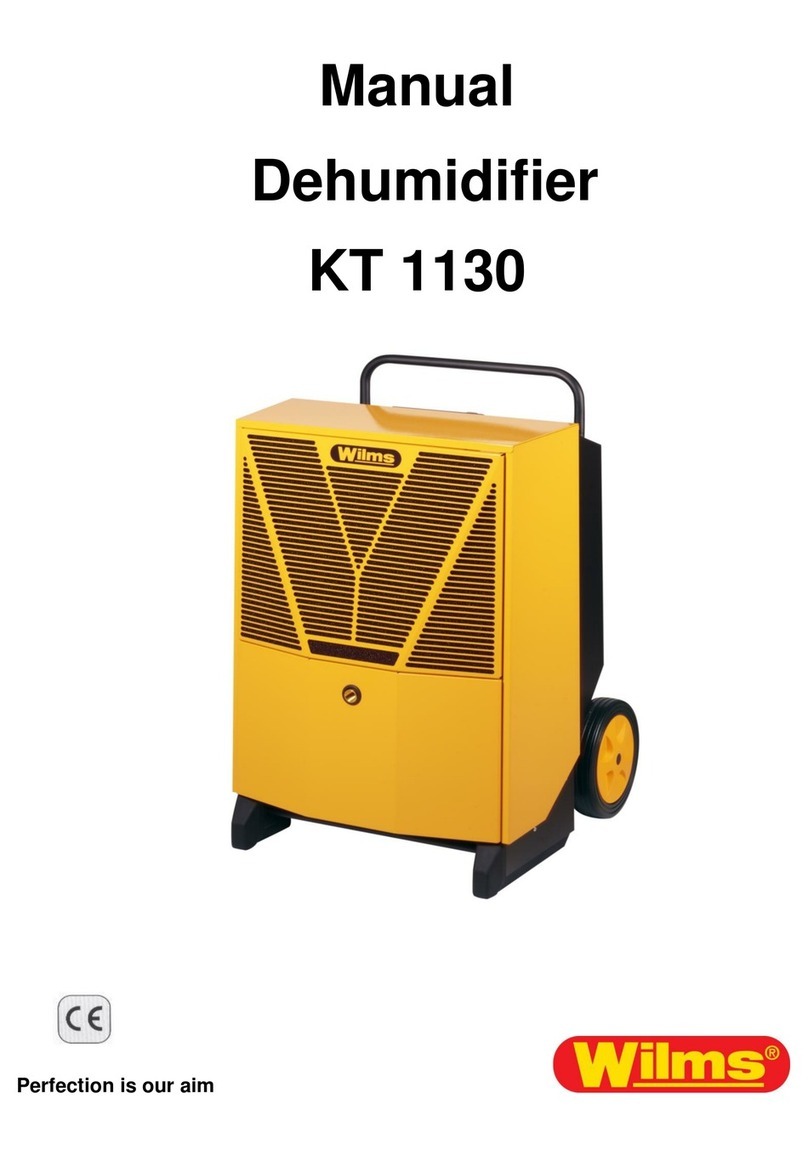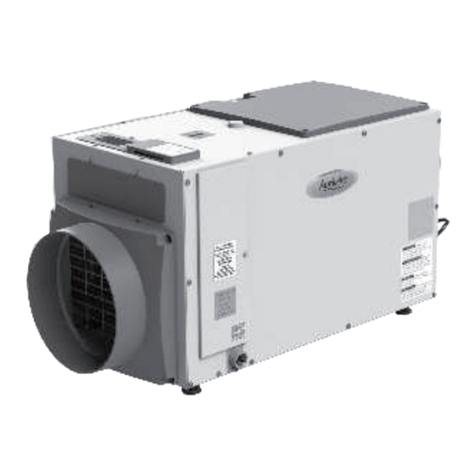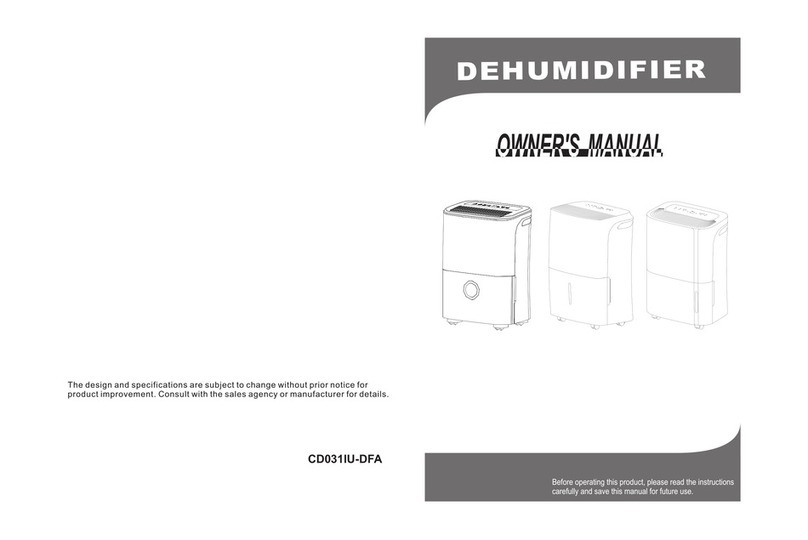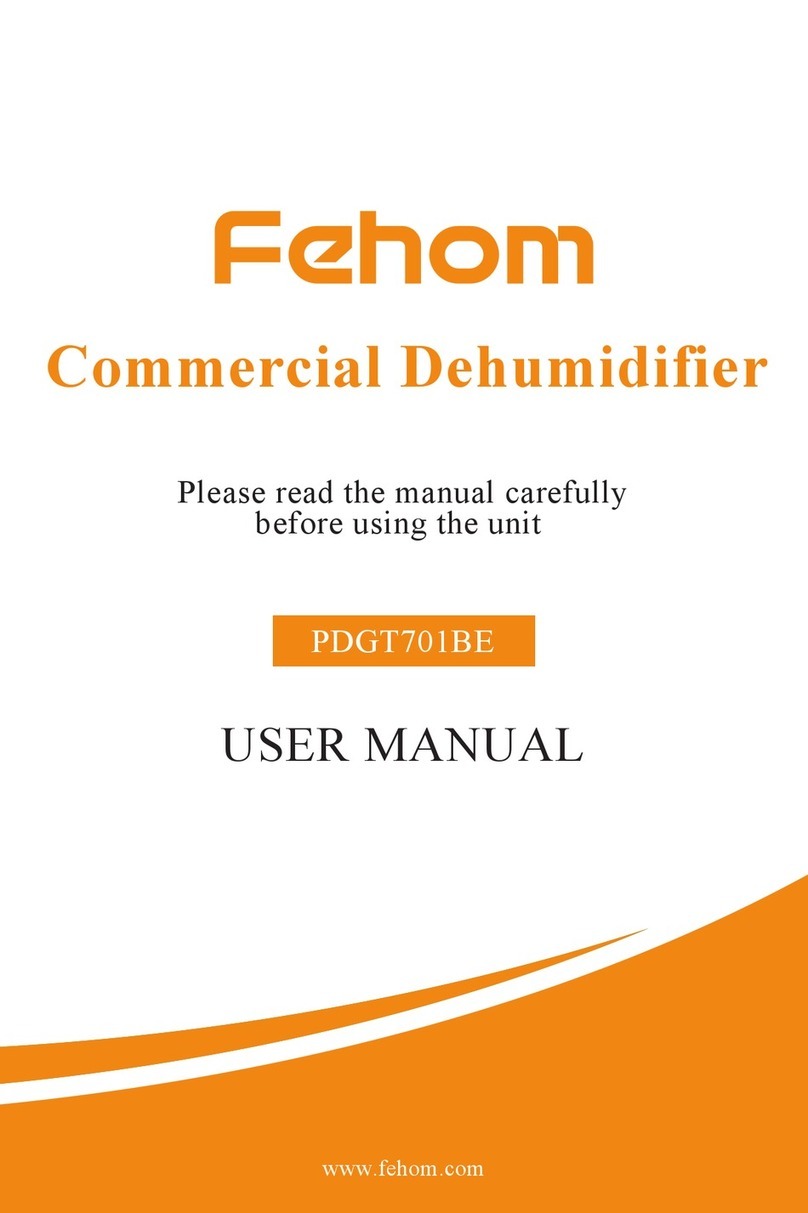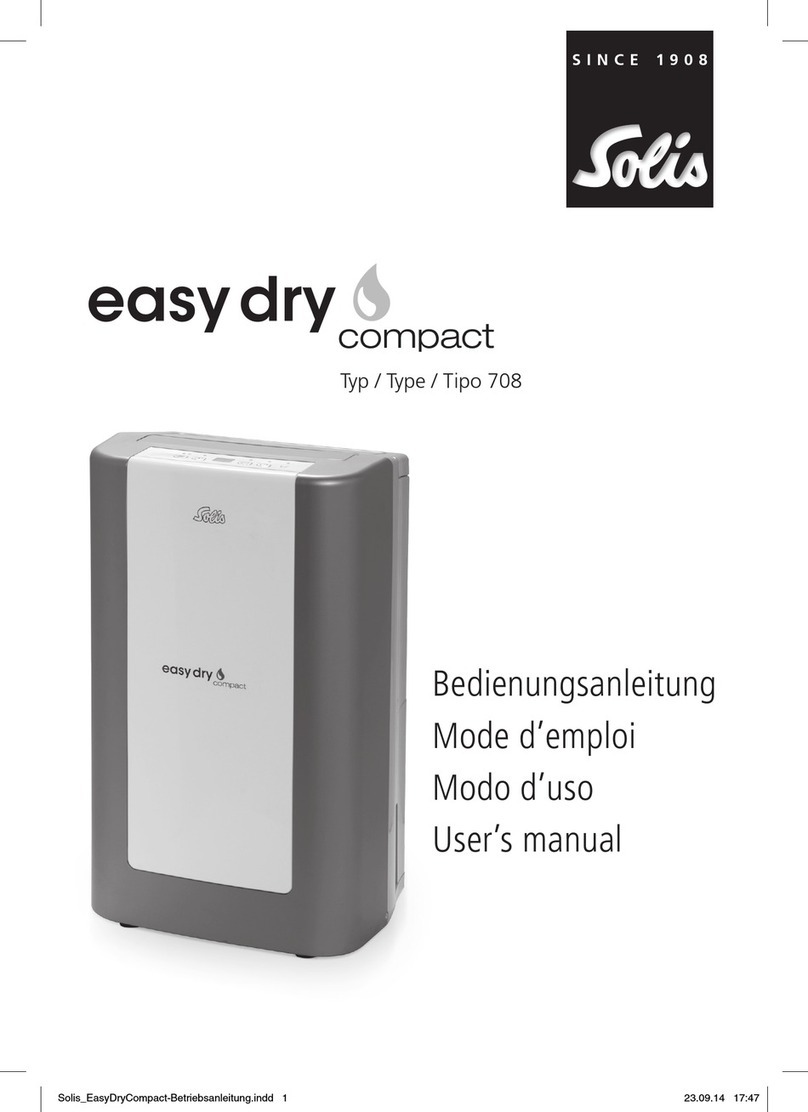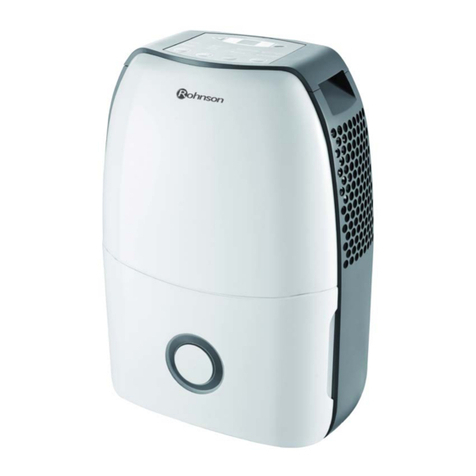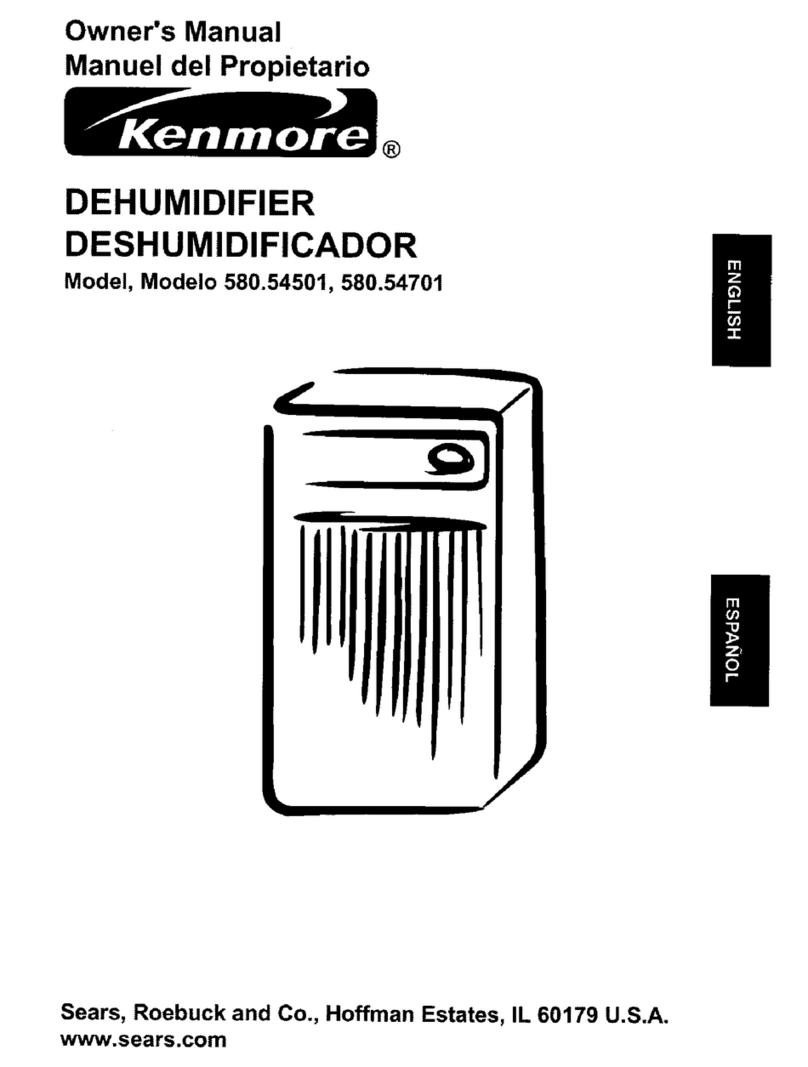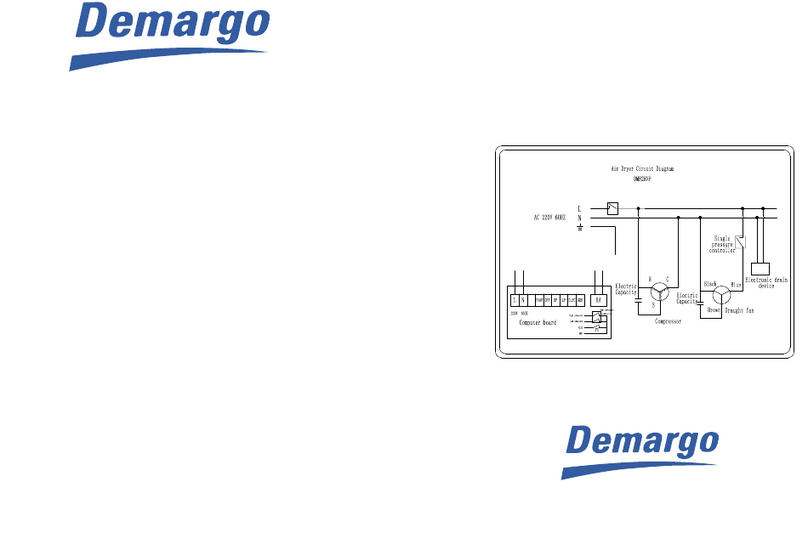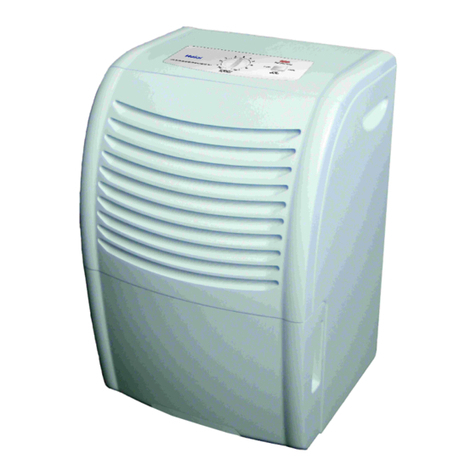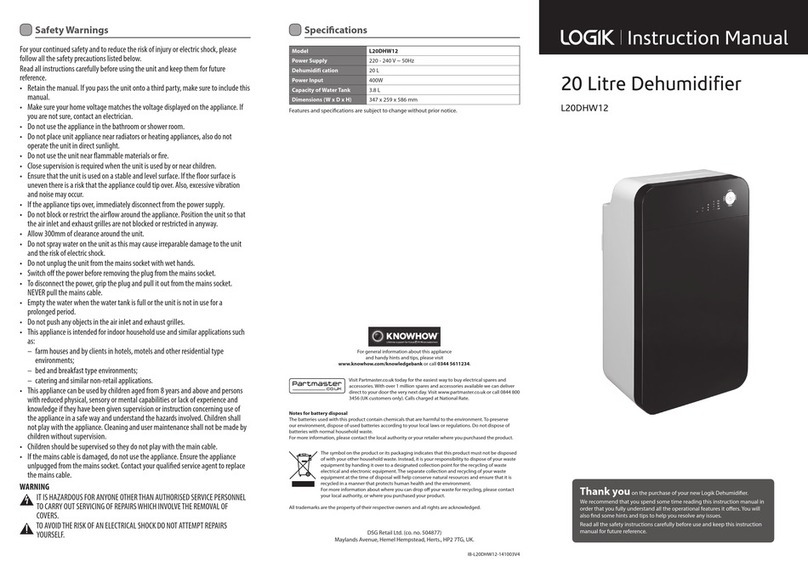
► Didietro FIG. 3
5. Aletta di ventilazione
6. Mandrino
7. entrata d’aria / ltri
8. Finestra livello acqua
9. Contenitore dell’acqua
►5. SERVIZIO
► Pannello di commando FIG. 4
1. Pulsante di impostazione dell’umidità
2. Indicatore della modalità di lavoro (continuo, umidità del
40%, 50%, 60%, 70%)
3. Visualizzatore della temperatura/umidità
4. Indicatore dell’orologio
5. Pulsante della visualizzazione della temperatura
6. Indicatore dello ionizzatore e TiO 2 (funzioni opzionali a
seconda del modello acquistato)
7. Indicatore DEUMIDIFICATORE
8. Pulsante DEUMIDIFICATORE
9. Indicatore della ventilazione ad alta velocità
10. Pulsante di velocità/ventilazione
11. Indicatore della ventilazione a bassa velocità
12. Indicatore dell’alimentazione
13. Pulsante ON/OFF (alimentazione)
14. Indicatore del “Riempimento dell’acqua”
15. Pulsante dell’OROLOGIO
16. Pulsante dello ionizzatore e TiO 2 (funzioni opzionali a
seconda del modello acquistato)
► Funzione dell’illuminazione (FIG. 6)
Luce blu – umidità del locale > 70%
Luce verde - umidità del locale 50~70%
Luce rossa - umidità del locale < 50%
Luca rossa lampeggiante – allarme del riempimento
dell’acqua
► Servizio
1. Collegare il dispositivo all’apposita presa elettrica (Con-
trollare il valore della tensione/frequenza sulla targhetta
dati del dispositivo).
2. Premere il pulsante ON/OFF per avviare il dispositivo. Il
compressore viene attivato.
3. Premere il pulsante dell’impostazione dell’umidità per
selezionare la modalità di lavoro: sso, livello d’umidità del
40%, 50%, 60% o del 70%. Si accende un indicatore re-
lativo per un dato valore
4. Premere il pulsante della velocità/ventilazione per im-
postare la ventilazione ad alta o bassa velocità. Si accende
un indicatore relativo per un dato valore
5. Premere il pulsante OROLOGIO, per impostare il tem-
po di lavoro desiderato (1~24 ore). Dopo aver premuto il
pulsante OROLOGIO, il visualizzatore indicherà il tempo
attualmente impostato, liberando il pulsante dopo 8 secon-
di il visualizzatore ritorna ad indicare l’umidità del locale.
Dopo che è passato il tempo impostato, il compressore si
disattiva automaticamente.
6. Premendo il pulsante „TEMP” viene visualizzata la tem-
peratura attuale del locale, liberandolo, dopo 8 secondi, il
visualizzatore ritorna ad indicare l’umidità del locale.
7. La funzione del DEUMIDIFICATORE attiva la modalità
turbo del sistema di ventilazione attivando una continua
deumidicazione dell’aria, la funzione permette di asciuga-
re la biancheria lavata.
8. Per disattivare il dispositivo, premere il pulsante ON/
OFF.
9. Con la funzione di preattivazione (PRE-SET), tramite
il pulsante OROLOGIO è possibile programmare l’orario
dell’avvio della macchina senza attivare altre funzioni del
dispositivo (compreso il pulsante ON/OFF)/ Per esempio,
impostando l’orologio sul ‘2’, il dispositivo si attiverà dopo
2 ore.
►6. USCITA DELL’ACQUA
Con il serbatoio pieno, il compressore - per motivi di si-
curezza - viene disattivato automaticamente e l’indicatore
di riempimento dell’acqua si illumina in rosso.
Per rimuovere il serbatoio dell’acqua, estrarlo perpendico-
larmente dalla macchina.
Una volta svuotato il serbatoio, rimetterlo al suo posto.
Dopo il riposizionamento del serbatoio, la spia del riem-
pimento dell’acqua si spegne e il deumidicatore si avvia.
Nel caso in cui il serbatoio venga inserito male, l’indicatore
del riempimento rimane illuminato in rosso.
►SCOLLO CONTINUO
Utilizzando il deumidicatore in condizioni di elevata umi-
dità dell’aria, il serbatoio dell’acqua richiederà uno svuota-
mento più frequente. In tale situazione, più conveniente è
impostare l’opzione dello svuotamento continuo del serba-
toio, a tale scopo eseguire le seguenti operazioni:
1. Rimuovere il serbatoio dell’acqua (FIG. 4)
2. Collegare il conduttore d’acqua all’uscita del diametro:
11 mm (il condotto non è fornito con il dispositivo) (FIG. 5)
3. Assicurarsi, che il condotto sia ssato bene e l’acqua
scorra senza intoppi. Attenzione! Alle temperature molto
basse, proteggere il condotto dal congelamento.
4. Posizionare il serbatoio al suo posto (FIG. 6).
►7. MANUTENZIONE E CONSERVAZIONE
Prima di comminciare la manutenzione o la pulizia bisogna
scollegare l’impianto dalla rete elettrica.
PULIZIA DELLA CARCASSA
Per pulire l’impianto bis ogna usare il tessuto morbido.
Vietato di usare delle sostanze chimiche voltatili, detergen-
ti, benzina, vestiti trattati chimicamente, pure altrie soluzio-
ni di pulizia. Ogni sostanza sopra citata puó danneggiare la
carcassa dell’impianto.
PULIZIA DEL FILTRO
Questo modello di deumidicatore è dotato di 2 tipi di ltri
(FIG. 7):
1. FILTRO ANTIPOLVERE
-staccare il ssaggio del ltro, rimuovere il ltro a carboni
attivi.
- Pulire il ltro delicatamente tramite l’aspirapolvere o sci-
acquandolo al rubinetto. -Se il ltro è molto sporco, usare
acqua calda e una piccola quantità di detergente delicato.
- prima del suo utilizzo, assicurarsi che il ltro sia comple-
tamente asciutto
- non esporre il ltro alla luce solare diretta.
2. FILTRO A CARBONI ATTIVI (per legare le particelle di
polvere sospese nell’aria e per ridurre la proliferazione di
batteri).
Il ltro a carboni attivi si trova dietro il ltro antipolvere e
contrariamente a quest’ultimo, non è lavabile. La durata del
ltro a carboni attivi dipende dalle condizioni dell’ambiente
dove viene utilizzato il dispositivo. Il ltro deve essere con-
en
it
DE
DK
EE
ES
FI
FR
GB
HR
HU
IT
LT
LV
NL
NO
PL
RO
RU
SE
SI
SK
UA
SE
SI
SK
TR
UA

